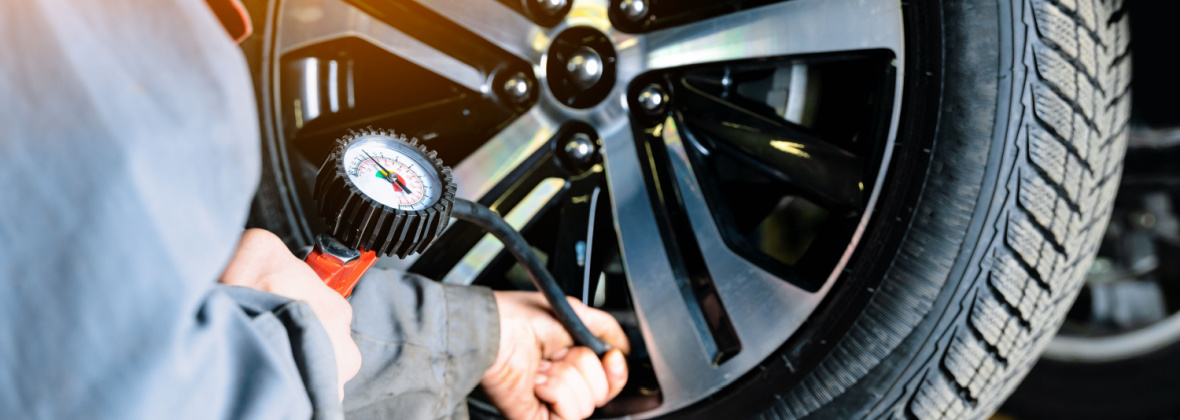Should I Increase My Tire Pressure In Cold Weather? TIRECRAFT Tread Talk
March 10, 2023
Tires

“Should I Increase My Tire Pressure In Cold Weather?”
In a word, yes; because air pressure drops in frigid temperatures as air molecules condense, it is often necessary to top tires up in cold weather. But unless you’re ready to put your tires, warranty, and road safety at risk, you’ll need to understand the why and how.
And according to the Tire and Rubber Association of Canada’s 2018 Omni Report, most drivers don’t. In fact, most drivers’ general approach to air pressure management leaves much to be desired, as:
- Only 30% of surveyed drivers check their tire pressure monthly
- Only 35% of surveyed drivers know to check air pressure when tires are cold
- 37% of respondents said they use the MAXIMUM PRESSURE reading on the sidewall to determine air pressure levels, which means more than one-third of drivers are driving with dangerous levels of overinflation
In light of these findings, it is safe to say that most drivers could probably use some help managing tire pressure in cold weather.
Don’t worry—you don’t need to be a tire expert or dig up the notes from your highschool science class. We’ve laid it all out in simple terms down below, and if you’d prefer to speak directly with a certified tire tech, it’s as easy as contacting your local TIRECRAFT. Every consultation is free, and one quick conversation could save you the price of a tire replacement!
Read on to learn how to manage your tire pressure in cold weather, or contact your local TIRECRAFT to speak directly with a tire tech near you.
How To Manage Tire Pressure In Cold Weather: TIRECRAFT Tips
Don’t panic if you get a low pressure reading or dashboard indicator this winter. Your tires probably aren’t leaking. When it gets cold outside, air molecules slow down and contract, which takes up less room inside your tire and creates less air pressure.
“Cold temperatures will cause tire pressure to drop about 1 pound per square inch for every 10° F drop in air temperature,” writes Consumer Reports (Bartlett & Petersen, 2021).
But while your tires may not be leaking, they are underinflated, and that can cause a lot of problems, including:
- Poor vehicle handling
- Reduced fuel economy
- Accelerated tread wear
- Increased risk of tire blowout, and more
With that in mind, it is generally recommended that you add air to your tires in cold weather, but only if it’s done properly.
First and foremost, you must check for a winter/cold-weather tire pressure reading. Both winter and all-weather tires typically list two different air pressure levels, one for warm weather and another for when it’s cold. If you’re using OEM tires, the cold weather pressure recommendation may be found on the placard on the driver’s side door jamb, near the trunk lid, or in your owner’s manual. If you’re using a set of winter tires you purchased a bit later, consult the manufacturer’s instructions.
Do not use the maximum pressure level indicated on the tire sidewall, as this tells you the maximum pressure your tires can withstand, not the recommended level.
Generally speaking, 30 to 35 PSI is recommended as the ideal tire pressure in cold weather, but this will vary depending on your unique vehicle and tire type.
For accurate measurements, make sure to take tire pressure readings only when your tires are cold, and do not rely on the reading from your TPMS system, as these typically do not light up until tire pressure drops 25% below the recommended level.
Do not fill your tires to the level recommended for driving in warm weather when it is cold outside. If you’re using a summer tire or an all-season with limited winter capabilities, this may be the only pressure level provided. When in doubt, consult with your local TIRECRAFT.
Additionally, you may need to let air out of your tires once it gets warmer outside. Tires lose about 1-3 PSI per month on their own, so this may not be necessary, but if temperatures shoot back up overnight, it’s worth checking to eliminate the risks of overinflation.
Learn More About Managing Tire Pressure: Contact TIRECRAFT
To learn more, schedule a free pressure top-up, or get a great price on a handheld gauge and compressor, get in touch with your local TIRECRAFT today.
References
Bartlett,J. & Petersen, G. (2021, October 19). Why tires go flat in cold weather. Consumer Reports.
Back

